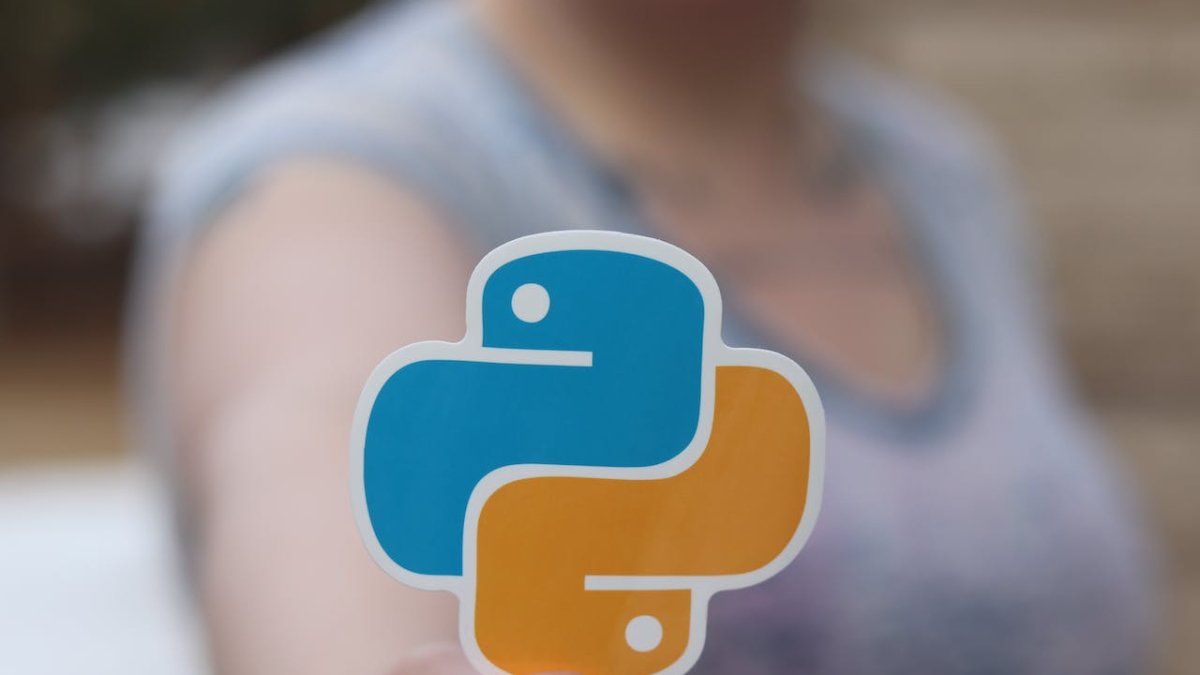Python is a versatile and powerful programming language that can be used for various purposes, such as data analysis, machine learning, automation, and web development. In this blog post, we will focus on how to use Python for web development, and cover the following topics:
- What is web development and why use Python for it?
- What are the skills and tools required for Python web development?
- How to create a simple web application in Python using Flask?
- How to deploy your Python web application to the internet?
What is Web Development and Why Use Python for It?
Web development is the process of creating websites and web applications that run on the Internet and can be accessed by users through web browsers. Web development involves two main components: the front end and the back end.
The front end is the part of the web application that users see and interact with, such as the layout, design, and functionality. The front end is usually built using HTML, CSS, and JavaScript, which are the core languages of the web.
The backend is the part of the web application that runs on the server and handles the logic, data, and functionality of the web application. The backend is usually built using a programming language, such as Python, and a framework, such as Flask or Django, which provides tools and features to simplify web development.
Python is a popular choice for web development for several reasons, such as:
- Easy to learn: Python has a simple and clear syntax, which makes it easy to read and write code. Python also has a large and active community, which provides support and resources for learning and using Python.
- Rich libraries and frameworks: Python has a vast and diverse collection of libraries and frameworks, which provide pre-written code and functionality for various tasks and purposes, such as data analysis, machine learning, web scraping, testing, and web development. Some of the most popular and powerful Python web frameworks are Flask, Django, and Pyramid, which we will discuss later in this post.
- Fast and scalable: Python is a high-level and interpreted language, which means it runs faster and uses less code than some other languages, such as Java or C++. Python also supports multiple paradigms, such as object-oriented, functional, and procedural, which allow you to write code in different ways and styles. Python also supports concurrency and parallelism, which enable you to run multiple tasks and processes at the same time and improve the performance and scalability of your web application.
What are the Skills and Tools Required for Python Web Development?
To become a Python web developer, you need to have a combination of technical and soft skills, as well as familiarity with various tools and methods. Some of the most important skills and tools for Python web development are:
- Python: This is the programming language that you use to write the backend code of your web application. You should have a solid understanding of the basic concepts and features of Python, such as variables, data types, operators, expressions, statements, functions, classes, modules, packages, etc. You should also be familiar with some of the common Python libraries and frameworks for web development, such as Flask, Django, Requests, BeautifulSoup, SQLAlchemy, etc.
- HTML, CSS, and JavaScript: These are the languages that you use to write the front-end code of your web application. You should have a basic understanding of how to use HTML to define the structure and content of your web page, how to use CSS to style and layout your web page, and how to use JavaScript to add interactivity and functionality to your web page. You should also be familiar with some of the common frontend libraries and frameworks, such as Bootstrap, jQuery, React, Angular, etc.
- Database: This is where you store and manage the data of your web application, such as user information, posts, comments, etc. You should have a basic understanding of how to use a database management system, such as SQLite, MySQL, PostgreSQL, MongoDB, etc., to create, read, update, and delete data from your database. You should also be familiar with some of the common Python libraries and frameworks for working with databases, such as SQLAlchemy, PyMongo, Django ORM, etc.
- API: This is an interface that allows your web application to communicate with other web applications or services, and exchange data and requests. You should have a basic understanding of how to use an API protocol, such as REST, GraphQL, SOAP, etc., to define how data and requests are exchanged between the server and the client, and how different services and components interact with each other. You should also be familiar with some of the common Python libraries and frameworks for creating and consuming APIs, such as Flask-RESTful, Django REST Framework, Requests, etc.
- Tools: These are software applications that help you with various tasks, such as code editing, debugging, testing, version control, and deployment. You should have a basic understanding of how to use a code editor, such as Visual Studio Code, PyCharm, Sublime Text, etc., to write and edit your code, and how to use a terminal or command-line interface, such as Git Bash, PowerShell, etc., to run commands and scripts. You should also be familiar with some of the common tools and platforms for debugging, testing, version control, and deployment, such as Chrome DevTools, PyTest, Git, GitHub, Heroku, etc.
How to Create a Simple Web Application in Python Using Flask?
To demonstrate how to use Python for web development, we will create a simple web application using Flask, which is a lightweight and easy-to-use Python web framework. Flask provides the basic functionality and features for web development, such as routing, templating, sessions, etc., and allows you to customize and extend your web application with various libraries and plugins.
Our web application will be a simple blog, where users can create, read, update, and delete posts. We will use SQLite as our database, SQLAlchemy as our database library, and Jinja as our templating engine. We will also use Bootstrap as our frontend framework, and Heroku as our deployment platform.
The steps to create our web application are as follows:
- Set up the development environment and install the required packages
- Create the database and the models
- Create the routes and the views
- Create the templates and the static files
- Test and debug the web application
- Deploy the web application to the internet

Set up the Development Environment and Install the Required Packages
The first step is to set up the development environment and install the required packages for our web application. We will use Visual Studio Code as our code editor, and create a virtual environment to isolate our project dependencies. We will also use pip to install the packages that we need, such as Flask, SQLAlchemy, etc.
To set up the development environment and install the required packages, follow these steps:
- Create a folder for your project, such as
flask-blog, and open it in Visual Studio Code. - Open the terminal in Visual Studio Code, and create a virtual environment using the following command:
python -m venv venv- Activate the virtual environment using the following command:
venv\Scripts\activate- Install the required packages using the following command:
pip install flask sqlalchemy- Create a file called
requirements.txtin your project folder, and list the packages that you have installed, such as:
flask
sqlalchemy
- Create a file called
app.pyin your project folder, and write the following code to import Flask and create an app instance:
from flask import Flask
app = Flask(__name__)
- Run the app using the following command:
flask run- Open your web browser, and go to the URL
http://localhost:5000/. You should see a message sayingHello, World!, which means your app is running successfully.
Create the Database and the Models
The next step is to create the database and the models for our web application. We will use SQLite as our database, which is a simple and lightweight database that stores data in a single file. We will also use SQLAlchemy as our database library, which is a powerful and flexible library that provides an object-relational mapper (ORM) and a query builder for working with databases.
To create the database and the models, follow these steps:
- Import SQLAlchemy and create a database URI in your
app.pyfile, such as:
from flask import Flask
from flask_sqlalchemy import SQLAlchemy
app = Flask(__name__)
app.config['SQLALCHEMY_DATABASE_URI'] = 'sqlite:///blog.db'- Create a database instance and a base model class in your
app.pyfile, such as:
from flask import Flask
from flask_sqlalchemy import SQLAlchemy
app = Flask(__name__)
app.config['SQLALCHEMY_DATABASE_URI'] = 'sqlite:///blog.db'
db = SQLAlchemy(app)
class BaseModel(db.Model):
__abstract__ = True
id = db.Column(db.Integer, primary_key=True)
created_at = db.Column(db.DateTime, default=db.func.now())
updated_at = db.Column(db.DateTime, default=db.func.now(), onupdate=db.func.now())- Create a model class for the posts in your
app.pyfile, such as:
from flask import Flask
from flask_sqlalchemy import SQLAlchemy
app = Flask(__name__)
app.config['SQLALCHEMY_DATABASE_URI'] = 'sqlite:///blog.db'
db = SQLAlchemy(app)
class BaseModel(db.Model):
__abstract__ = True
id = db.Column(db.Integer, primary_key=True)
created_at = db.Column(db.DateTime, default=db.func.now())
updated_at = db.Column(db.DateTime, default=db.func.now(), onupdate=db.func.now())
class Post(BaseModel):

Add a Comment
You must be logged in to post a comment